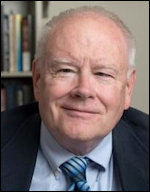
Richard Vedder is the nation’s foremost authority on college costs and productivity. His op-ed in the Wall Street Journal today is a devastating indictment of U.S. higher education. Compared to a half century ago, college professors are teaching less, students are studying less, and the ratio of administrators to faculty has soared.
He makes several points, some of which we’ve highlighted on Bacon’s Rebellion and bear repeating, and some of which we have overlooked:
Students studying less. College students today don’t study as hard as in generations past. According to surveys of student work habits, the average time spent in class and studying is about 27 hours a week. That compares to 40 hours weekly in the mid-20th century.
Grade inflation. Grade inflation is one reason why students work don’t as hard. The average grade today is a B to B+ compared to C+ to B- in 1960. When As and Bs are handed out like candy, students don’t see the need to buckle down. As Vedder points out, learning takes time, and the diminution of effort means college students are learning less. (A few disciplines such as engineering and medicine are exceptions.)
Faculty teaching less. The typical professor spends one-third fewer hours in class today than in 1965. Thus, more professors are needed to teach the same number of students.
Socially useless “research.” Much of professorial research has little value. Writes Vedder: “In English (literary criticism), the volume of research is immense — but little of it is often cited or even read.” Why reduce teaching loads to write papers no on reads?
Administrative bloat. In the 1970s, the typical faculty-to-staff ratio was roughly two-to-one. Today administrators outnumber professors.
Undoubtedly, these national trends apply to Virginia higher ed. The Joint Legislative Audit and Review Commission (JLARC) has documented the surge in administrative staff, but no one collects data on average teaching load — seemingly an easy exercise. The under-employment rate of Virginia college grads should be relatively easy to collect as well. Grade inflation and student work habits likely would be harder to document.
The cost crisis in higher-ed today is largely a productivity crisis. The crisis can’t be papered over with bigger state appropriations and more financial aid.
Virginia colleges and universities are holding back tuition increases this year, a responsive to generous General Assembly incentives, but underlying productivity issues remain. I’ve always been skeptical of blunt-force-trauma approaches such as tuition caps. But there is no reason why the State Council of Higher Education for Virginia (SCHEV) can’t update basic productivity measures such as staff-to-faculty ratios and average faculty hours taught. Feed the statistics to higher-ed board members, and then ask them to do their jobs and ask the tough questions.

Leave a Reply
You must be logged in to post a comment.